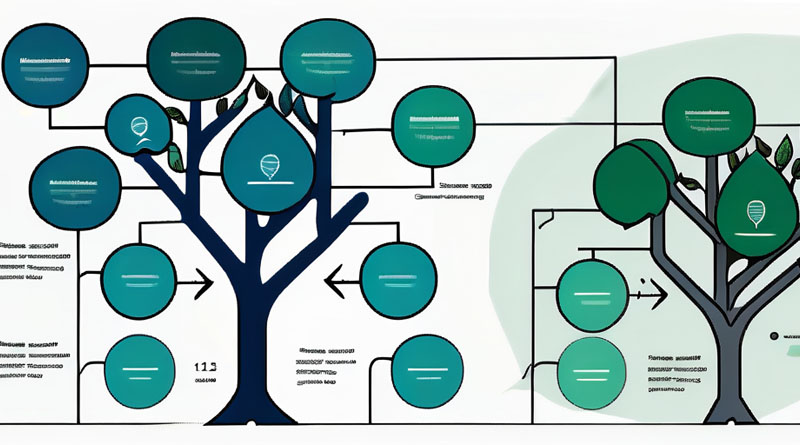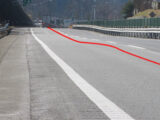
How Decisions are Made within a Pavement Management System (PMS)
November 22, 2024Introduction
A Pavement Management System (PMS) is an essential tool for transportation agencies to maintain and optimize their road networks. The system helps decision-makers evaluate the current condition of pavements, predict future deterioration, and determine the most cost-effective treatments to extend pavement life. As pavements age and deteriorate due to traffic loading and environmental factors, proper maintenance and timely interventions become critical to preserving road quality while managing budget constraints.
This article explores how decisions are made within a pavement management system, focusing on the role of decision trees, preservation strategies, holding strategies, and deferred strategies. It will break down the decision-making process into clear, actionable components to provide engineers with a structured understanding of how PMS guides pavement maintenance.
Components of a Pavement Management System (PMS)
A Pavement Management System is essentially a set of tools and methods used to collect data, assess the condition of pavements, forecast their deterioration, and plan maintenance. The key components include:
1. Data Collection: Pavement condition data is gathered through various means, such as visual surveys, automated data collection (e.g., using ARAN vehicles), and more advanced techniques like Ground Penetrating Radar (GPR). Common indicators include:
- International Roughness Index (IRI): Measures the roughness of the pavement and its impact on ride quality.
- Pavement Condition Index (PCI): A numerical index ranging from 0 to 100 that rates the pavement’s overall condition.
- Distress Data: Identifies visible defects like cracks, potholes, or rutting.
2. Condition Assessment: Data is analyzed to determine the current state of the pavement. Engineers categorize pavements as “good,” “fair,” or “poor,” using thresholds defined by condition indices such as IRI or PCI.
3. Decision Trees: Once the pavement condition is evaluated, decision trees come into play. Decision trees are logical models that outline various scenarios based on pavement condition, traffic volume, and available budget. They guide the selection of the most appropriate treatment at any given time.
4. Treatment Types: The PMS evaluates whether the pavement needs:
- Preservation (early-stage treatments),
- Rehabilitation (intermediate-level repairs),
- Reconstruction (complete replacement).
The Role of Decision Trees in PMS
Decision trees form the backbone of the decision-making process within a pavement management system. These trees guide engineers through complex decision paths, enabling consistent and evidence-based actions. A decision tree in pavement management is structured as a flowchart of condition-based rules that leads to specific maintenance actions.
1. Structure of a Pavement Decision Tree
A typical decision tree might start with an initial question: what is the current pavement condition?
- If the pavement is in good condition, the next node could recommend a preservation treatment.
- If the pavement is in fair or poor condition, the tree branches out to more intensive treatments like rehabilitation or reconstruction, depending on further criteria like traffic volume and distress severity.
Each branch represents a logical choice based on pavement data, such as PCI, IRI, or distress type. The tree also integrates financial and operational constraints. For example, a branch might evaluate whether the available budget allows for preservation or rehabilitation, influencing which maintenance strategy to pursue.
2. How Decision Trees Work in Practice
Let’s say a pavement section has a PCI of 80 (indicating good condition) but shows minor surface cracking. A decision tree might guide the engineer toward crack sealing or micro-surfacing as a preservation treatment to prevent further damage.
Conversely, if the PCI has dropped to 40, the tree might recommend mill and overlay to restore the structural integrity of the pavement. If the pavement is near failure (PCI < 20), the tree would likely recommend full-depth reconstruction.
The goal of the decision tree is to maximize the pavement’s life while minimizing costs, using predictive models to anticipate future deterioration.
Preservation Strategy: Preventing Major Issues Early
A preservation strategy is the proactive application of maintenance treatments to pavements that are still in relatively good condition. The aim is to prevent minor defects from evolving into major issues that require expensive repairs.
When and Why to Use Preservation?
Preservation is used when a pavement is still structurally sound but shows early signs of distress, such as minor cracking, raveling, or surface roughness. The key principle of preservation is that early, low-cost interventions prevent the need for more costly repairs later.
Typical preservation techniques include:
- Crack sealing: Fills cracks to prevent water infiltration.
- Micro-surfacing: Adds a thin layer of material to smooth the surface and seal small cracks.
- Chip sealing: Applies a layer of asphalt and aggregate to protect the surface.
A preservation-first approach can significantly extend the life of pavements while keeping costs low, which is why decision trees often prioritize preservation treatments if conditions allow.
Holding Strategy: Temporary Solutions for Deferral
When funding or time constraints prevent the implementation of long-term repairs, a holding strategy can be employed. This involves applying temporary, lower-cost treatments that “hold” the pavement in a serviceable condition until more comprehensive work can be scheduled.
When Holding Strategies Are Needed?
Holding strategies are often used when pavements are in fair to poor condition, but resources for full rehabilitation or reconstruction are not immediately available. Instead of letting the pavement deteriorate further, temporary measures are used to maintain usability.
Examples of holding strategies include:
- Patching: Filling potholes or localized defects to improve safety.
- Thin overlays: Applying a thin layer of asphalt to temporarily improve ride quality.
Holding strategies are designed to buy time, keeping the pavement functional while postponing larger investments. Decision trees guide engineers toward these temporary solutions when immediate action is needed but long-term repairs are delayed.
Deferred Strategy: Postponing Action
In some cases, decision-makers may choose a deferred strategy, which means delaying necessary maintenance or rehabilitation due to financial, resource, or prioritization constraints. This strategy allows the pavement to continue deteriorating until it reaches a point where more significant intervention is necessary.
Why Defer Action?
Deferring maintenance is often a result of budget limitations or prioritization of other, higher-priority projects. It is essentially a short-term savings strategy but often leads to long-term costs. Pavements left untreated will continue to degrade, eventually requiring more expensive treatments such as full reconstruction.
The use of decision trees ensures that deferred strategies are applied only when absolutely necessary and in cases where the pavement can sustain further deterioration without immediate risk.
Risks of Deferral
The main risk of deferring maintenance is the potential for higher future costs. A pavement that could have been preserved or rehabilitated with relatively low investment may end up requiring full reconstruction if deferral continues for too long.
How Decision Trees Manage the Balance
The decision-making process in a PMS involves balancing three key factors:
- Pavement condition: The current structural and functional state of the pavement.
- Available resources: Budgetary constraints and the cost-effectiveness of various treatments.
- Long-term goals: Extending pavement life, optimizing budget, and minimizing disruption to road users.
Decision trees manage this balance by combining real-time data with predictive models, allowing for:
- Timely interventions through preservation.
- Temporary solutions through holding strategies.
- Deferrals when resources are insufficient.
The key strength of decision trees is their ability to provide structured, data-driven recommendations while taking into account the complexity of pavement deterioration and resource availability.
Conclusion
The decision-making process within a pavement management system relies on a combination of data analysis, logical decision trees, and strategic planning. By understanding the relationships between preservation, holding strategies, and deferred strategies, engineers can make informed decisions that balance short-term needs with long-term goals.
Preservation strategies help extend pavement life when conditions are still good, holding strategies provide temporary solutions when funding is limited, and deferred strategies allow for postponing actions when necessary. The use of decision trees helps ensure that these strategies are applied consistently and effectively, optimizing pavement performance and budget use over time.
In a well-functioning PMS, the decisions made at each stage of pavement life contribute to a sustainable and efficient roadway network, delivering better service to road users while minimizing long-term costs.
[49 total views]

